Finding Patterns in the Noise
How the Emerging Field of Genomics Is Accelerating Our Discovery
Forget “plastics.” If Hollywood were to re-make the famous 1967 film, The Graduate, today’s entrepreneur might have a new word of advice for the inexperienced title character: “genomics.”
While genetics describes the study of genes and their role in inherited conditions, genomics describes an exploding field of discovery. It flows from new technology that allows scientists to rapidly sequence and analyze the entire human genome, as well as the genomes of thousands of other organisms, from bacteria to mice.
The life-transforming potential of this new science is immense. The promise of genomics includes a new era of precise, personalized medicine and a wave of vastly improved treatments for many complex disorders.
But the path to those goals could be fraught with potential wrong turns. The challenges involved in translating genomic discoveries into everyday medical care are immense. Yet world-class research institutions like Cincinnati Children’s are tackling those challenges head-on. In fact, accelerating discovery through genomics is one of the key components of the medical center’s “Next Era” strategic plan.
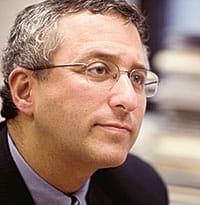 “The biggest revolution in medicine in the past 15 to 20 years has been that we have the ability to measure and analyze genetic material and apply it to patient care at faster speeds and lower costs than ever before,” says Tracy Glauser, MD, associate director, Cincinnati Children’s Research Foundation. “If we want to continue to be the leader in children’s health, we need to incorporate genomics into our entire medical approach.”
“The biggest revolution in medicine in the past 15 to 20 years has been that we have the ability to measure and analyze genetic material and apply it to patient care at faster speeds and lower costs than ever before,” says Tracy Glauser, MD, associate director, Cincinnati Children’s Research Foundation. “If we want to continue to be the leader in children’s health, we need to incorporate genomics into our entire medical approach.”
When Glauser and colleagues describe the roles genomics can play in biomedical research, they begin with the patient − the prime source of data gleaned from the tiniest biological samples and the latest electronic medical records. The conversation quickly progresses to the world of biomedical informatics, where the technology to gather and analyze “big data” has exploded.
It then moves into the realm of discovery, where scientists use this wealth of data to gain new understandings of human development and disease processes. This in turn leads to new diagnostic tools and improved treatments that will have a far-reaching impact on care.
Discovery Starts with the Patient
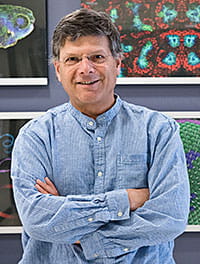 Raphael Kopan, PhD, director of Developmental Biology, breaks the modern history of medical research into two eras. The era of molecular biology began in 1953 with James Watson and Francis Crick describing the double-helix structure of DNA. Then in 2003, scientists published the first full sequence of the human genome, a 13-year, $3 billion project that opened the door to a new era of genomics, proteomics, metabolomics and other “omics.” The ability to conduct studies at the genomic level has transformed the research enterprise.
Raphael Kopan, PhD, director of Developmental Biology, breaks the modern history of medical research into two eras. The era of molecular biology began in 1953 with James Watson and Francis Crick describing the double-helix structure of DNA. Then in 2003, scientists published the first full sequence of the human genome, a 13-year, $3 billion project that opened the door to a new era of genomics, proteomics, metabolomics and other “omics.” The ability to conduct studies at the genomic level has transformed the research enterprise.
“In the not-so-distant past, we made genetic discoveries by taking an animal amenable to genetic manipulation, screening that animal for mutations that we could detect, and analyzing what those mutations did. Then we would search the human genome to try to find an equivalent mutation. Only then could we determine if there was something we could do to offer some relief,” Kopan says. “We have cured many mice in this process, but not so many humans.”
Now, however, high-throughput gene sequencing technology can capture any person’s entire genome for as little as $1,000 and analyze that individual’s entire set of 3 billion nucleotides in a matter of days.
“For the first time in my history as a researcher, we do not need to begin the discovery process with animal models. We can start with the patient and run experiments that look directly at the patient’s own genomic information,” Kopan says.
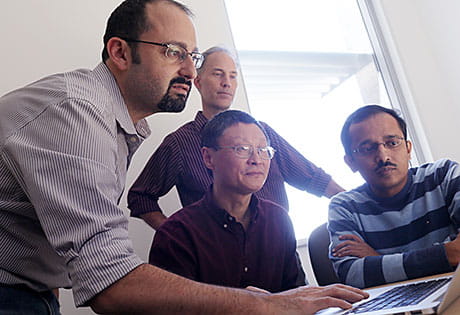
Members of the Division of Biomedical Informatics help colleagues draw insights from massive amounts of data generated by genome-wide analysis. From left: Drs. Nathan Salomonis; Jun Ma; Peter White, division director; and Anil Jegga.
Big Data Keeps Getting Bigger
Since the first human, mouse and yeast genomes were documented, the research world has published whole-genome data for more than 1,000 organisms. Research centers have amassed immense repositories of genetic profiles of people with all manner of diseases, infections and inherited conditions. Huge libraries store details on how thousands of medications and promising chemical compounds affect human and animal genomes.
The chase is on to find crucial gene-drug-disease associations that could lead to improved, targeted medications. Experts in the fast-growing field of biomedical informatics are developing the powerful hardware and software needed to process, store and retrieve so much data. Even the scientists themselves wonder how any human mind can comprehend it all.
“If you’re considering the entire genome, it’s not possible to analyze all this through a reductionist approach,” says Peter White, PhD, director of Biomedical Informatics. “Now we are asked to look at discovery from an entire-disease perspective, over lots of potential patients, and to consider the entire genome at once. Our goal is to develop unified processes for generating and analyzing genomic information that is seamless across the enterprise.”
A New World of Discovery
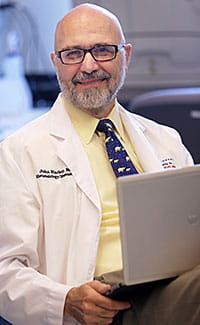 John Harley, MD, PhD, director of the Center for Autoimmune Genomics and Etiology (CAGE), compares the potential of genomics to Columbus discovering the New World.
John Harley, MD, PhD, director of the Center for Autoimmune Genomics and Etiology (CAGE), compares the potential of genomics to Columbus discovering the New World.
“The exploration is just beginning,” Harley says. “There’s no medical problem outside the reach of these new approaches. Genomic research has implications for asthma, sickle cell disease, diabetes, depression, seizures, and more. There will be new drugs that drop out of this effort that will give physicians the capacity to encourage or discourage inflammatory response, or control how fat is metabolized, or even control the process of atherosclerosis.”
The challenge: finding those valuable needles in a haystack 39,000 miles high.
“We’re working in terabytes when most people cannot understand what a gigabyte is. And soon we’ll be working in petabytes,” Harley says.
“It requires collaborations of large groups of people with enormous amounts of expertise to extract the secrets hidden in all that data,” Harley says. “This isn’t something that can be done by a lone entrepreneur working in a garage.”
Building on the opportunities presented by genomics will require research and educational institutions like Cincinnati Children’s to train a generation of young investigators in a new form of scientific literacy.
“Our species’ gift and curse is our ability to see patterns in noise,” Kopan says. “Everyone who has ever seen a shape in a cloud can relate to this. Clouds are nothing more than random patterns of water vapor. But our brains see animals, faces and all sorts of other shapes within them. This is why it is so important to learn how to use big data appropriately. Otherwise, we can waste a lot of time and effort chasing patterns that are just water vapor.”
Genomics Already Showing Impact on Care
Despite the challenges, our doctors have already shown how genomic research is improving care for children.
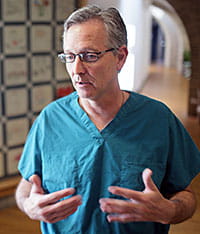 The OtoSeq hearing loss test was developed based on research led by John Greinwald, Jr., MD, an otolaryngologist at Cincinnati Children’s. The test uses rapid “nextgen” sequencing to detect genetic mutations that cause sensorineural hearing loss – a permanent, genetically linked hearing loss that affects 1 in 700 children.
The OtoSeq hearing loss test was developed based on research led by John Greinwald, Jr., MD, an otolaryngologist at Cincinnati Children’s. The test uses rapid “nextgen” sequencing to detect genetic mutations that cause sensorineural hearing loss – a permanent, genetically linked hearing loss that affects 1 in 700 children.
Greinwald’s team sees 200 to 250 children every year who travel here from around the country. Cincinnati Children’s is one of the few centers nationwide that performs and interprets genetic tests.
Thanks to nationally mandated hearing screening at birth, most parents in this country are informed early if their child has hearing loss. But the OtoSeq test provides details that the mandated screen cannot.
“The test allows interventions that can be transformative,” Greinwald says. “At 1 month of age, we can tell families what caused the hearing loss, its likelihood of progression, and if it is associated with other medical problems. We can give them valuable information from the start, so they can get on with treatment.”
And treatment is crucial in helping a child develop speech and language skills.
“Some children will do just fine with hearing aids,” Greinwald says. “But genetic testing can predict a more severe phenotype in which hearing aids are not the long-term solution and parents should think about cochlear implants.”
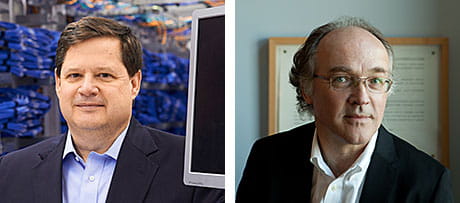
John Pestian, PhD, MBA (left), and Sander Vinks, PharmD, PhD.
An Early Foray into Personalized Medicine
Thousands of children who need neuro-psychiatric medications already have benefited from another type of genetic test.
The spin-off company Assurex, based in the Cincinnati suburb of Mason, Ohio, has commercialized a test panel that was developed by researchers at Cincinnati Children’s in collaboration with the Mayo Clinic. Three of the co-inventors are still based at Cincinnati Children’s: Glauser, Sander Vinks, PharmD, PhD, and John Pestian, PhD, MBA.
Since it was developed in 2004, more than 15,000 patients at Cincinnati Children’s alone have received the neuro-psychiatric test panel. The test identifies children with genetic variants that make them normal, rapid or slow metabolizers of this class of medications. It then recommends how physicians can adjust medication doses to achieve maximum benefit.
Now, Cincinnati Children’s is a member of the national Clinical Pharmacogenetics Implementation Consortium (CPIC), which brings together several leading medical centers to find gene-drug associations for many more conditions.
Similar technologies are helping cancer patients at Cincinnati Children’s receive customized doses of chemotherapy and helping doctors prescribe carefully controlled doses of immunosuppressants to organ transplant recipients.
“This is essentially, the ‘Next Era’ in action,” Vinks says. “This is a project that has made it all the way around the wheel, starting with a problem experienced by patients, discovering how genetics plays a role in that problem, then developing a solution that improves outcomes.”
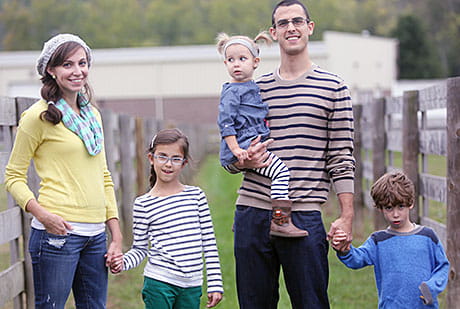
 “The biggest revolution in medicine in the past 15 to 20 years has been that we have the ability to measure and analyze genetic material and apply it to patient care at faster speeds and lower costs than ever before,” says Tracy Glauser, MD, associate director, Cincinnati Children’s Research Foundation. “If we want to continue to be the leader in children’s health, we need to incorporate genomics into our entire medical approach.”
“The biggest revolution in medicine in the past 15 to 20 years has been that we have the ability to measure and analyze genetic material and apply it to patient care at faster speeds and lower costs than ever before,” says Tracy Glauser, MD, associate director, Cincinnati Children’s Research Foundation. “If we want to continue to be the leader in children’s health, we need to incorporate genomics into our entire medical approach.” Raphael Kopan, PhD, director of Developmental Biology, breaks the modern history of medical research into two eras. The era of molecular biology began in 1953 with James Watson and Francis Crick describing the double-helix structure of DNA. Then in 2003, scientists published the first full sequence of the human genome, a 13-year, $3 billion project that opened the door to a new era of genomics, proteomics, metabolomics and other “omics.” The ability to conduct studies at the genomic level has transformed the research enterprise.
Raphael Kopan, PhD, director of Developmental Biology, breaks the modern history of medical research into two eras. The era of molecular biology began in 1953 with James Watson and Francis Crick describing the double-helix structure of DNA. Then in 2003, scientists published the first full sequence of the human genome, a 13-year, $3 billion project that opened the door to a new era of genomics, proteomics, metabolomics and other “omics.” The ability to conduct studies at the genomic level has transformed the research enterprise.
 John Harley, MD, PhD, director of the Center for Autoimmune Genomics and Etiology (CAGE), compares the potential of genomics to Columbus discovering the New World.
John Harley, MD, PhD, director of the Center for Autoimmune Genomics and Etiology (CAGE), compares the potential of genomics to Columbus discovering the New World. The OtoSeq hearing loss test was developed based on research led by John Greinwald, Jr., MD, an otolaryngologist at Cincinnati Children’s. The test uses rapid “nextgen” sequencing to detect genetic mutations that cause sensorineural hearing loss – a permanent, genetically linked hearing loss that affects 1 in 700 children.
The OtoSeq hearing loss test was developed based on research led by John Greinwald, Jr., MD, an otolaryngologist at Cincinnati Children’s. The test uses rapid “nextgen” sequencing to detect genetic mutations that cause sensorineural hearing loss – a permanent, genetically linked hearing loss that affects 1 in 700 children.



